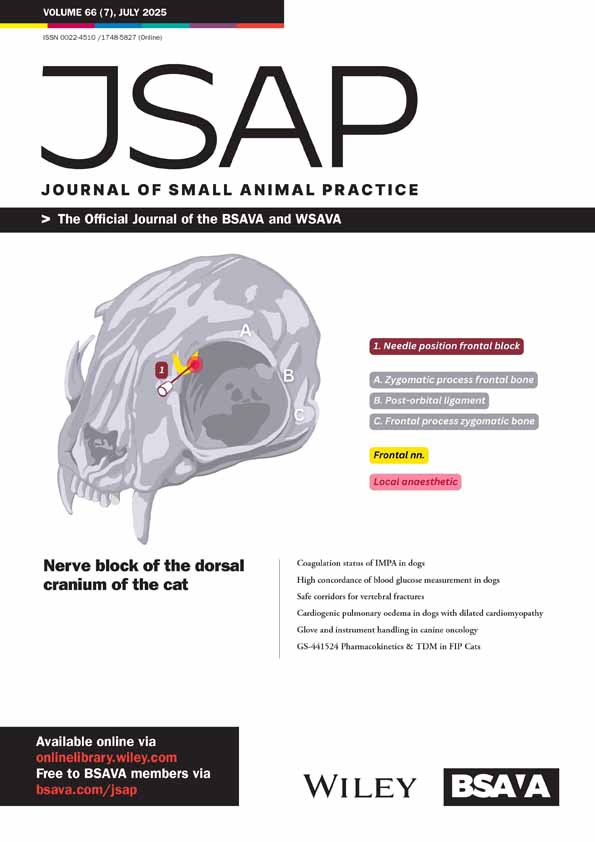Peripheral nerve blocks of the dorsal cranium in cats undergoing craniotomy: seven cases (2022-2023)
Abstract
Objectives
Locoregional anaesthesia of the dorsal cranium (scalp blocks) are used for craniotomy in people. The technique is described in dogs and appears efficacious. The aim was to describe its application in cats undergoing craniotomy.
Materials and Methods
All cats presenting to two referral centres between January 2022 and December 2023 for craniotomy, which received a scalp block, were considered for inclusion in this retrospective study. Cases were excluded if full peri-operative records were missing. Details of all anaesthetic and analgesic agents administered, the locoregional blocks performed, physiological responses to specific surgical time points and intraoperative complications were taken from anaesthetic records. Post-operative management, complications and pain assessments were taken from treatment sheets and electronic health records.
Results
Records of seven cats that underwent craniotomy and received a scalp block were identified. Surgery was for the removal of intracranial meningioma in all cats. Scalp blocks were performed using anatomical landmarks based on the technique described in dogs using a mixture of bupivacaine and dexmedetomidine. All scalp blocks were performed within 5 minutes. One cat received no intra-operative analgesia beyond the scalp block. The other cats received methadone between 0.1 and 0.3 mg/kg. The time from recovery until the first dose of post-operative pain relief ranged from 435 to 1440 minutes, with one cat receiving no post-operative opioids at all.
Clinical Significance
Scalp blocks appear a simple and potentially highly effective locoregional anaesthetic technique in cats undergoing craniotomy. Analgesia provided by the block appeared to last well into the post-operative period and warrants further investigation.
Open Research
Data availability statement
Data available on request from the authors.




